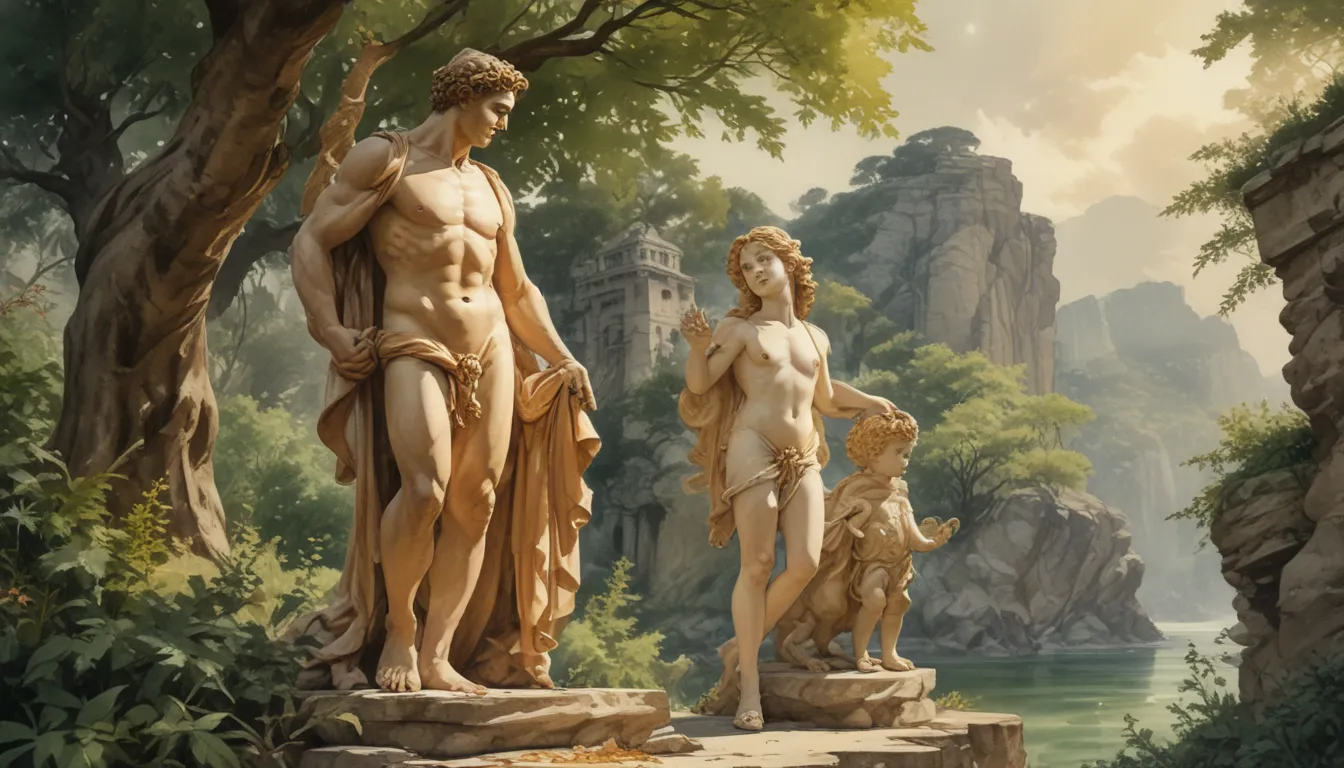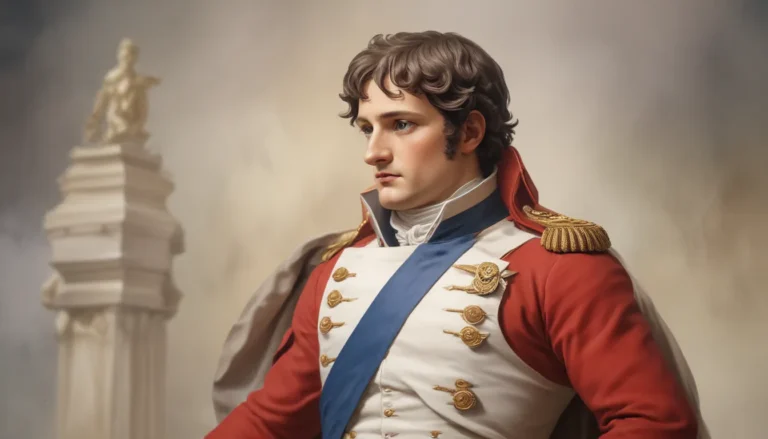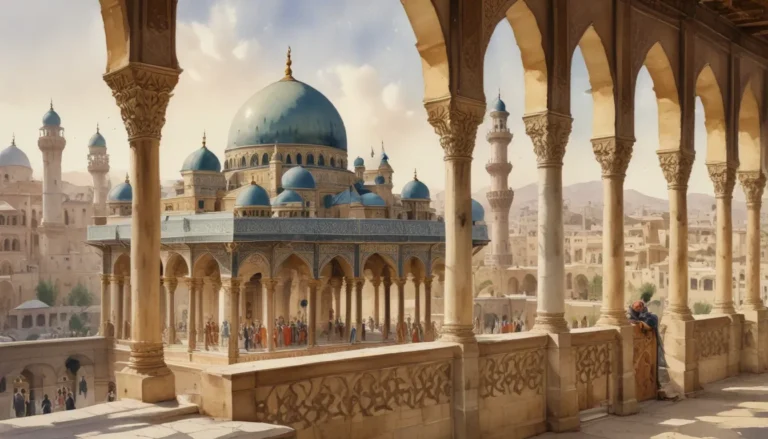The images in our articles are for illustrative purposes only and may not exactly match the content. They are intended to capture your interest and complement the text, not to replace it.
Are you curious about the mesmerizing world of ancient Greek art? Dive into the enthralling tale of the Hermes and the Infant Dionysus statue, a masterpiece that has intrigued art enthusiasts and historians for centuries. Join us on a journey as we unravel 10 surprising facts about this iconic sculpture that continue to captivate audiences worldwide.
A Glimpse Into Ancient Greek Artistry
Delve into the realm of ancient Greek sculpture with the Hermes and the Infant Dionysus Statue, also known as the Hermes of Praxiteles. Crafted by the renowned sculptor Praxiteles during the 4th century BCE, this masterpiece stands as a testament to the artistic excellence of the era.
An Intimate Depiction of Divine Entities
At the heart of the statue lies a captivating portrayal of the god Hermes cradling the infant god Dionysus in his arms. Capturing a moment of tender interaction between the two divine beings, the sculpture exudes a sense of grace and harmony that transcends time.
Intricate Details That Enchant the Eyes
Witness the meticulous attention to detail in the Hermes and the Infant Dionysus Statue, where every flowing drapery and delicate facial feature speaks of the sculptor’s skill and mastery. The lifelike texture of the marble adds to its mesmerizing beauty, captivating viewers with its realism.
Unraveling the Mystery of a Lost Masterpiece
While the original Hermes and the Infant Dionysus Statue is believed to be lost to history, Roman copies and replicas offer a glimpse into its splendor. The discovery of these replicas in the ruins of the Temple of Hera in Olympia, Greece, adds to the statue’s mystique and cultural significance.
A Votive Offering to the Divine
Speculations suggest that the statue might have been a votive offering, symbolizing devotion and seeking divine favor. Its presence in a temple underscores this theory, shedding light on the religious practices of ancient Greece.
The Epitome of Greek Idealism
Embodying the ancient Greek ideal of physical beauty, the Hermes and the Infant Dionysus Statue exudes harmony, balance, and proportion. Its timeless appeal resonates with the cultural values cherished by the ancient Greeks, making it a symbol of artistic perfection.
A Legacy That Transcends Centuries
The influence of the Hermes and the Infant Dionysus Statue extends beyond its creation, inspiring later works of art across various mediums. Its beauty and elegance have left an indelible mark on ancient and subsequent artistic endeavors, showcasing the enduring impact of classical Greek sculpture.
Pondering the Divine Bond Between Gods
Interpretations of the statue’s symbolism vary, with some viewing it as a representation of Hermes’ protective role towards Dionysus. The nuanced relationship between the two gods continues to spark scholarly debate and intrigue, inviting viewers to explore the depths of mythological narratives.
A Timeless Treasure that Captivates Hearts
Centuries after its creation, the Hermes and the Infant Dionysus Statue remains a beacon of artistic excellence, captivating enthusiasts and scholars alike. Its cultural significance and aesthetic allure make it a must-see masterpiece that continues to inspire awe and fascination.
Conclusion: A Testament to Artistic Mastery
In conclusion, the Hermes and the Infant Dionysus statue stands as a testament to the artistic mastery of ancient Greek sculptors. From its intricate details to its symbolic significance, this remarkable sculpture offers a glimpse into the artistic prowess and cultural values of the era. Whether you are an aficionado of Greek mythology, an art enthusiast, or simply curious about ancient artifacts, the Hermes and the Infant Dionysus statue is a captivating treasure that beckons exploration.
FAQs: Unveiling the Enigmatic Sculpture
Q: What is the story behind the Hermes and the Infant Dionysus statue?
A: The statue depicts Hermes holding the infant Dionysus, symbolizing the protective and nurturing aspect of the divine relationship between the two gods.
Q: Where was the statue discovered?
A: The statue was found in ancient Olympia, Greece, during excavations in the late 19th century.
Q: How old is the Hermes and the Infant Dionysus statue?
A: The statue dates back to the late 4th century BCE, making it over two thousand years old.
Q: Where is the statue currently located?
A: The statue is housed in the Archaeological Museum of Olympia in Greece, where visitors can admire its splendor.
Q: What is the significance of the Hermes and the Infant Dionysus statue?
A: The statue represents the union of two important gods in Greek mythology and showcases the artistic prowess of ancient Greek sculptors.
Embark on a journey of discovery and delve deeper into the enigmatic world of ancient Greek art with the Hermes and the Infant Dionysus statue. Explore the rich tapestry of cultural narratives and artistic brilliance woven into this timeless masterpiece. Let the allure of classical Greek sculpture transport you to an era of beauty, harmony, and divine splendor.






